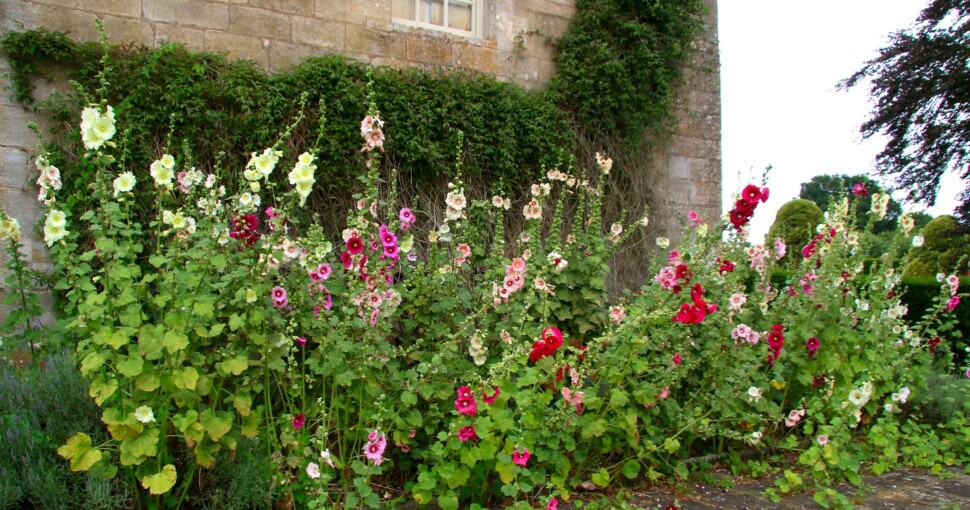Hollyhocks (Alcea rosea) are native to China but are cultivated worldwide for their beautiful flowers in shades of pink, black, blue, yellow, red, purple, and white. Hollyhocks grow eight or nine feet tall and have pale green, large flat leaves.
Contents
- 1. Petunia (Petunia)
- 2. Annual Tree Mallow (Lavatera trimestris)
- 3. Common Mallow (Malva neglecta)
- 4. Checker Bloom (Sidalcea malviflora)
- 5. Creeping Charlie (Glechoma hederacea)
- 6. American Arrowhead (Sagittaria latifolia)
- 7. Scarlet Globemallow (Sphaeralcea coccinea)
- 8. Marshmallow (Althaea officinalis)
- 9. Wild Hollyhock (Sidalcea virgata)
Although hollyhocks aren’t invasive, many people wonder if there are native alternatives to this plant. Because of their striking flowers and mallow-like leaves, people get confused when identifying hollyhocks. Many plants look like hollyhocks, including:
- Petunias – Petunia flowers look like hollyhock flowers.
- Annual tree mallows – Annual tree mallows produce flowers and leave like a hollyhock.
- Common mallows – All parts of the common mallow remind one of a hollyhock.
- Checker blooms – A checker bloom looks like a smaller version of a hollyhock.
- Creeping Charlies – These plants look like hollyhocks while young.
- American arrowheads – The flowers resemble hollyhocks.
- Scarlet globemallows – The leaves are hairy, and the flowers look like hollyhocks.
- Marshmallows – All parts of the plant resemble hollyhocks.
- Wild hollyhocks – Wild hollyhocks look like a smaller hollyhock variety.
Considering how much some of these plants look like a hollyhock, you might be curious to learn how to tell them apart. Continue reading if you want to learn more about these plants, how they look like hollyhocks, and how they differ.
Related: Are Hollyhocks Poisonous?
1. Petunia (Petunia)
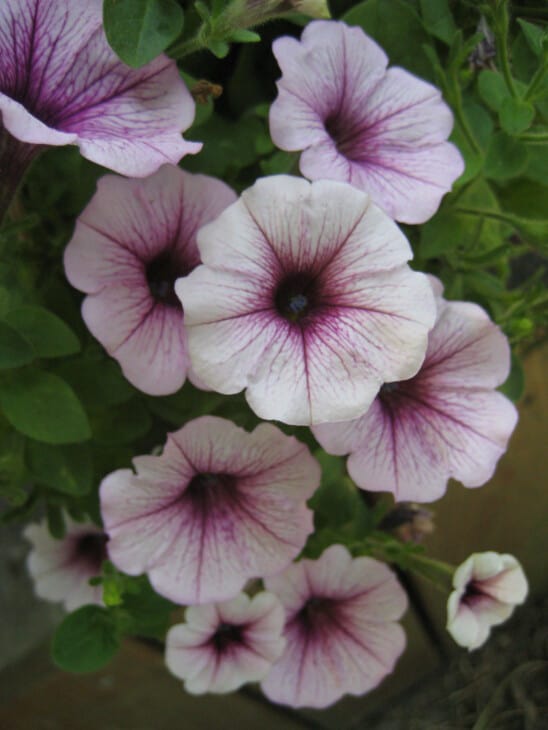
The petunia is one type of plant that looks like a hollyhock. Although these plants are only twelve inches tall, they produce flowers that look like hollyhock flowers. Petunias come in almost all colors available, and there are also many multicolored varieties.
Petunias and hollyhocks have five-petaled flowers with soft, papery flower petals. While hollyhock flowers are typically three to five inches wide when open, petunia flowers are only one inch to one inch and a half wide. Still, the flower structures look so similar that one may mistake a petunia for a smaller hollyhock.
A clear distinction between a petunia and a hollyhock is visible in the leaves. While hollyhocks have large, lobed leaves, petunias produce smaller, oval-shaped leaves. Petunias are also spreading plants, while hollyhocks grow vertically.
Related: Are Petunias Poisonous?
2. Annual Tree Mallow (Lavatera trimestris)
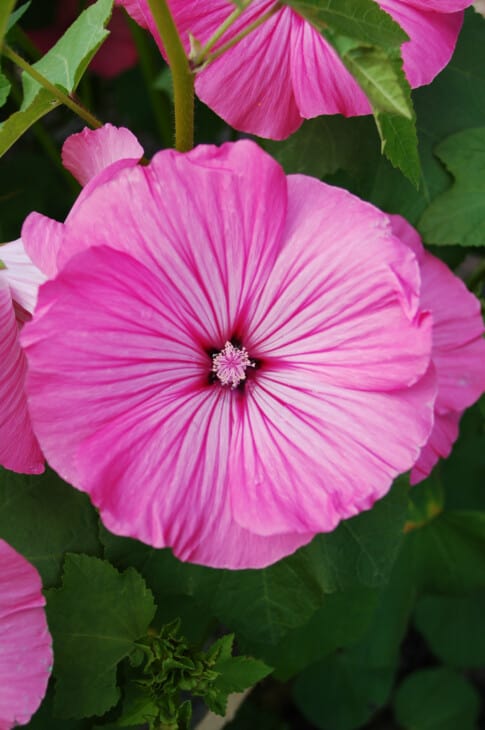
Hollyhocks are a part of the larger mallow family, which is why they look similar to many mallows. One such example is the annual tree mallow. The tree mallow grows up to ten feet tall, making it about the same size as a hollyhock.
Tree mallows also have the same large, papery flowers as hollyhocks. Tree mallow flowers are about two inches in diameter, slightly smaller than a fully open hollyhock. Tree mallow leaves are also large and lobed like hollyhock leaves.
One difference between a tree mallow and a hollyhock is that a tree mallow’s stamen protrudes farther out of the flower than a hollyhock’s stamen. The stamens are much longer and more visible than those of hollyhocks.
3. Common Mallow (Malva neglecta)
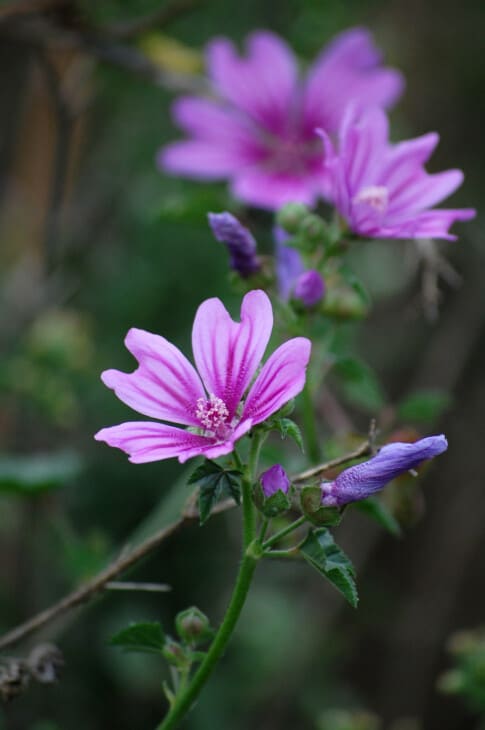
As you can imagine, the common mallow also has many similarities with a hollyhock. The common mallow is slightly smaller than a hollyhock, reaching four feet high. Common mallows produce flowers in many colors, including pink, white, and red. The flowers often have darker stripes down the center of their petals.
While the flowers also have five petals, each petal of a common mallow flower is separate. In contrast, hollyhock flower petals blend into each other. Like other mallows, the common mallow also has a longer stamen than a hollyhock.
Common mallows have larger leaves than hollyhocks. However, their leaves are the same shape as a hollyhock’s leaves and are covered in a fine, fuzzy layer, just like hollyhocks.
4. Checker Bloom (Sidalcea malviflora)
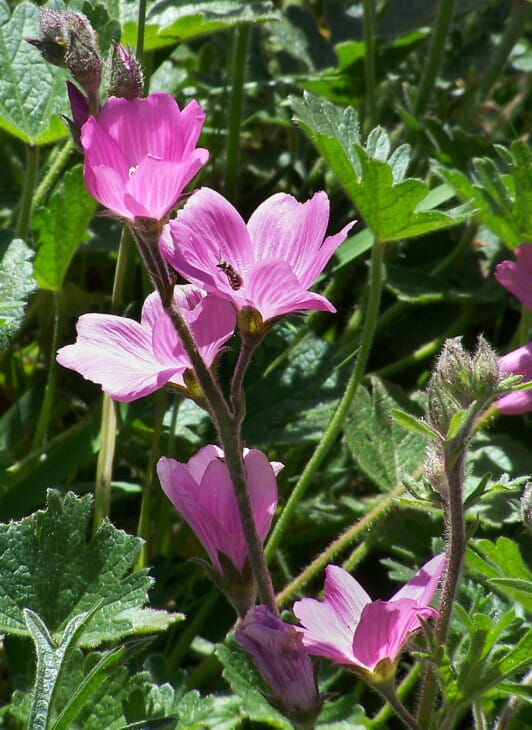
A checker bloom is also part of the mallow family. The plant is smaller than the hollyhock, reaching only about four feet in height. The flowers are beautiful and come in bright purple and pink. Checker blooms also have faint stripes on their petals. In addition, the checker bloom’s stamens look remarkably similar to hollyhock stamens.
They aren’t as long or prominent as other mallows. One way to tell checker blooms and hollyhocks apart is by looking at the leaves. Though both plants have fur-covered leaves, their shapes aren’t identical.
Checker bloom leaves might also have lobes, but their leaf edges have a bigger scalloped edge, while hollyhocks have smaller scallops along their edges.
5. Creeping Charlie (Glechoma hederacea)
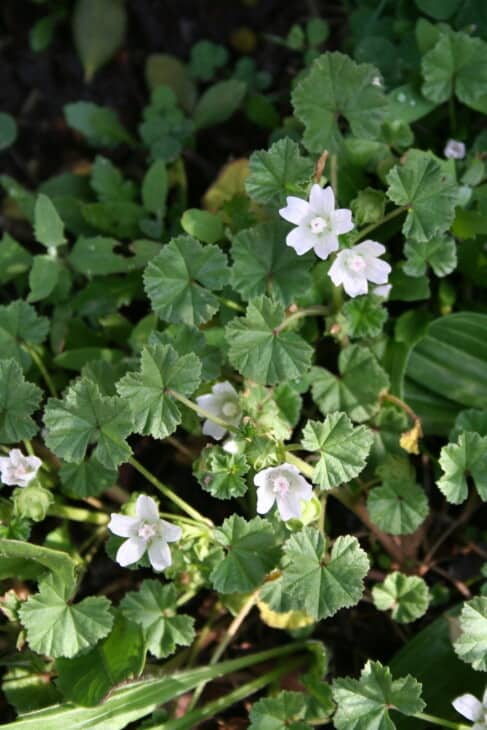
A creeping Charlie looks nothing like a hollyhock when grown (it is a vine). However, when young, a creeping Charlie’s leaves and stems resemble hollyhocks so much that it is often mistaken for a small hollyhock plant.
The creeping Charlie’s leaves are large and lobed. They are covered in fine hairs and have a scalloped edge. These are all characteristics that a creeping Charlie shares with a hollyhock. However, as the creeping Charlie matures, it’s easy to spot the difference between it and a hollyhock.
The flowers of a creeping Charlie resemble pansies rather than hollyhocks. Since this plant is native to North America, it is an excellent alternative/companion for hollyhocks.
6. American Arrowhead (Sagittaria latifolia)
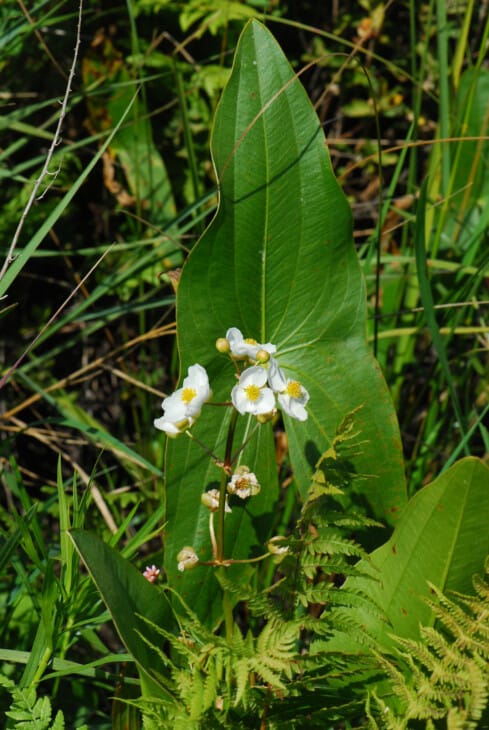
American arrowheads are also plants that resemble hollyhocks. The American arrowhead grows about six feet tall. It produces papery white flowers with a yellow stamen that looks like hollyhock flowers. However, the similarities end with the flowers.
Unlike hollyhocks, American arrowheads have large, waxy leaves. Their leaves are much bigger than hollyhock leaves and don’t have the same scalloped edge. Instead, American arrowheads have leaves that resemble a type of lily. In addition, American arrowheads are aquatic plants.
Related: 7 Arrowhead Plant Benefits
7. Scarlet Globemallow (Sphaeralcea coccinea)
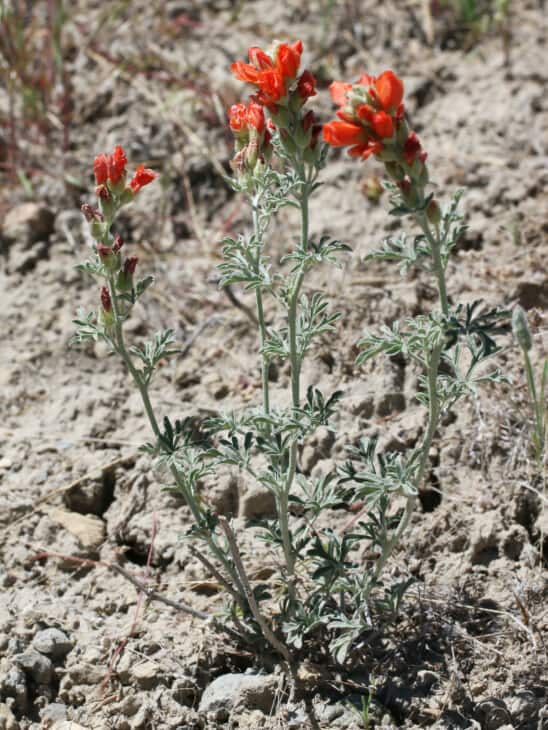
The scarlet globemallow is a type of mallow, as you can likely tell by its name. Like all mallows, the scarlet globemallow bears many similarities to a hollyhock. However, scarlet globemallows are much smaller than hollyhocks since they only grow about sixteen inches tall.
Scarlet globemallows have red, papery flowers with large petals and a prominent yellow stamen. These flowers remind one of a hollyhock. Scarlet globemallows are also covered in fine fuzz. However, the scarlet globemallow has a much smaller, longer leave, whereas the hollyhock has a mallow-shaped leave.
The leaves of a scarlet globemallow are also lobed, but they aren’t nearly as broad as those of a hollyhock, nor do they have scalloped edges.
8. Marshmallow (Althaea officinalis)
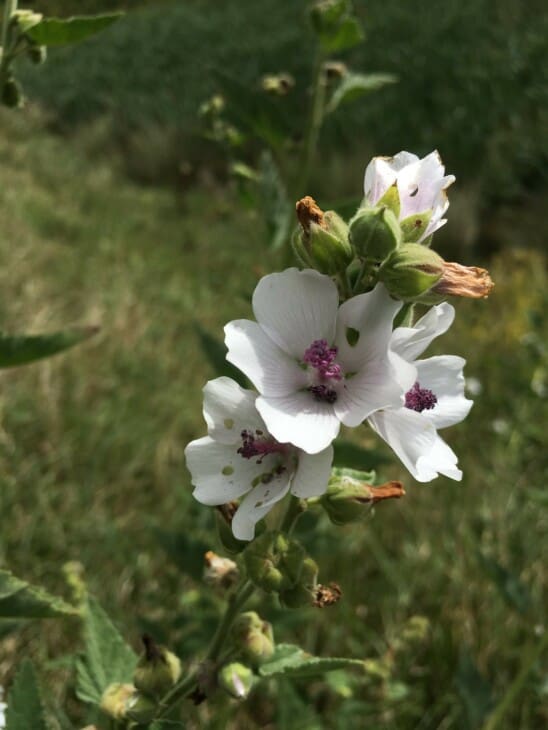
The marshmallow plant is likely one of the plants on this list that resembles a hollyhock. Although it is smaller, reaching three to four feet high, the marshmallow has the same plant structure, leaves, and flowers as a hollyhock. Marshmallows have broad, lobed leaves with scalloped edges. The leaves are covered in a fine fuzz, just like a hollyhock’s leaves.
The flowers of a marshmallow plant look remarkably similar too. Marshmallow flowers are two to three inches in diameter. They have the same papery petals as hollyhocks. However, their stamens are more prominent than those of a hollyhock plant.
While the marshmallow plant originated in Europe and Asia, they aren’t a threat to native species in America and have been naturalized there and in many other countries worldwide.
9. Wild Hollyhock (Sidalcea virgata)
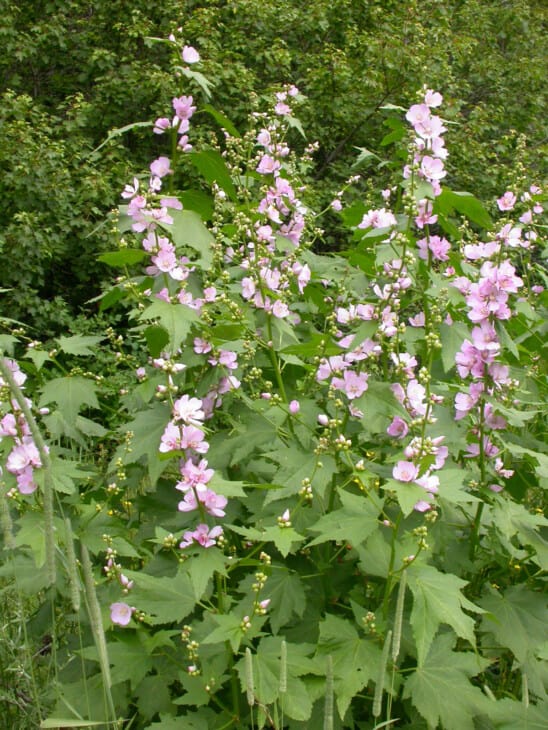
The final plant that looks like a hollyhock is a wild hollyhock. As the name suggests, these two plants have so much in common that they have been named after each other. The wild hollyhock looks like a small hollyhock plant.
The leaves, flowers, and plant structure look like a hollyhock. However, everything about a wild hollyhock is simply smaller. Wild hollyhocks also produce pink flowers that look exactly like those of a domestic hollyhock.
Unlike hollyhocks, the wild hollyhock is native to North America and is sometimes considered a weed. However, because of its beautiful flowers, the wild hollyhock is a beautiful plant that works well as an alternative to the domestic hollyhock.

